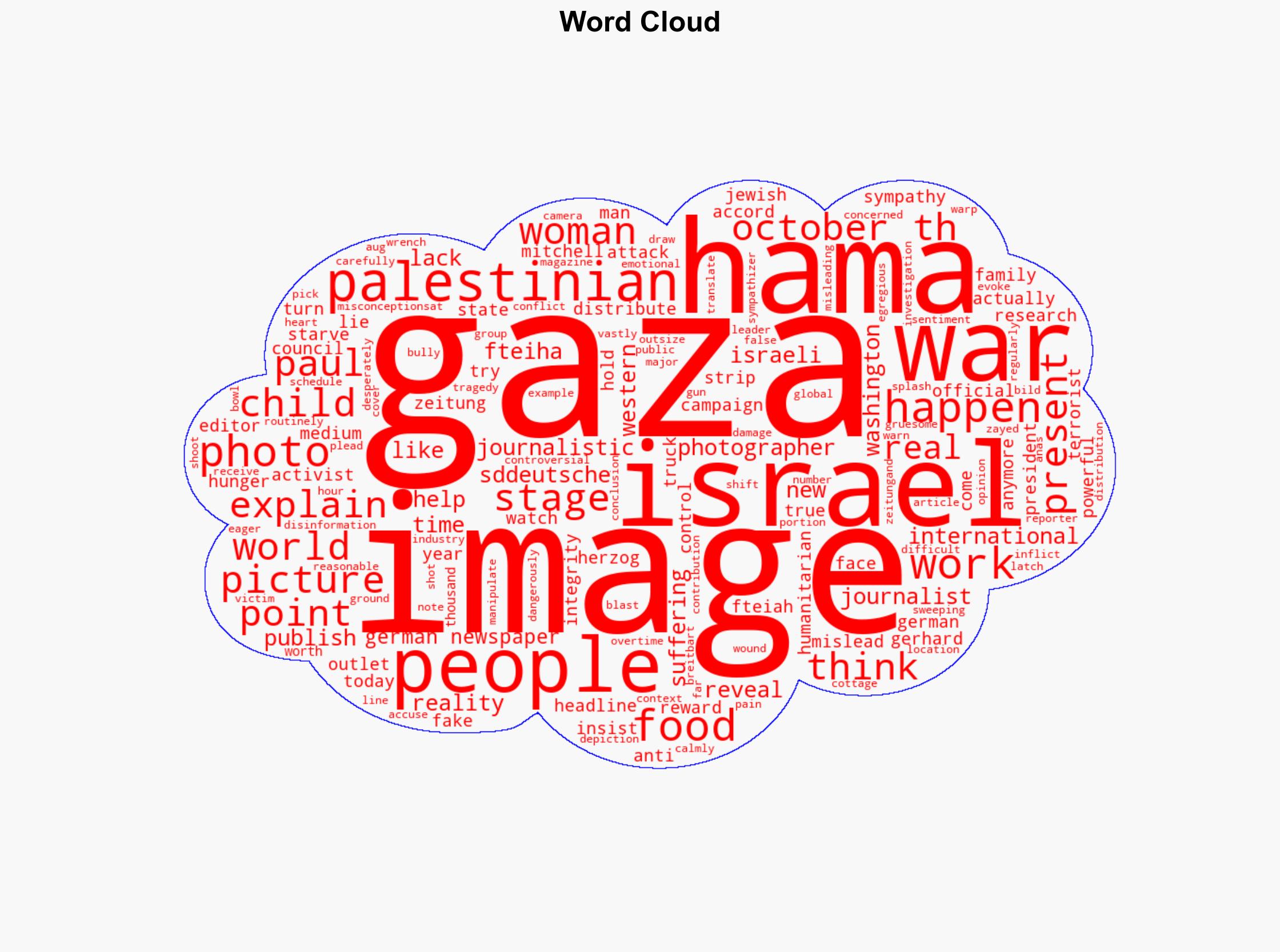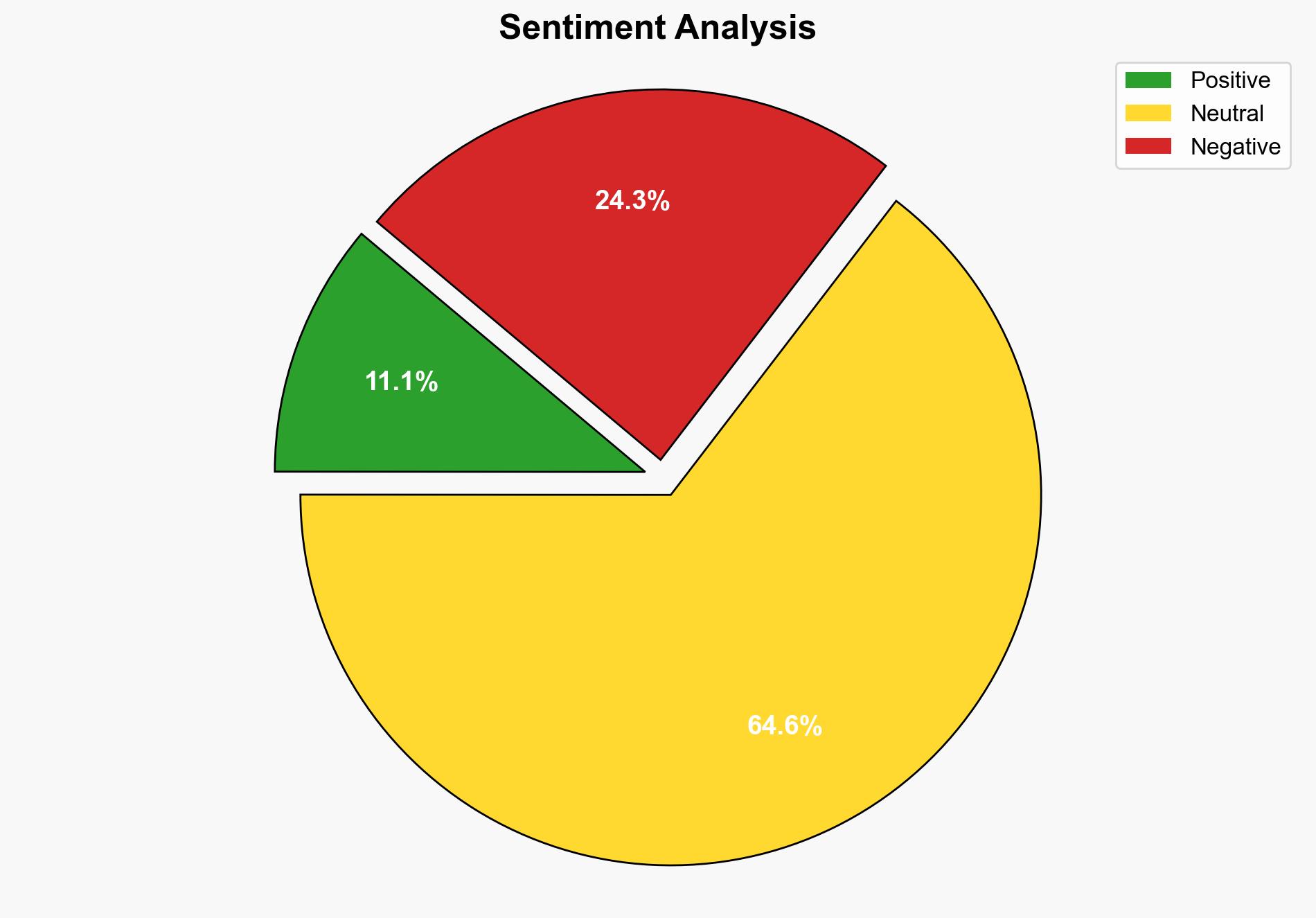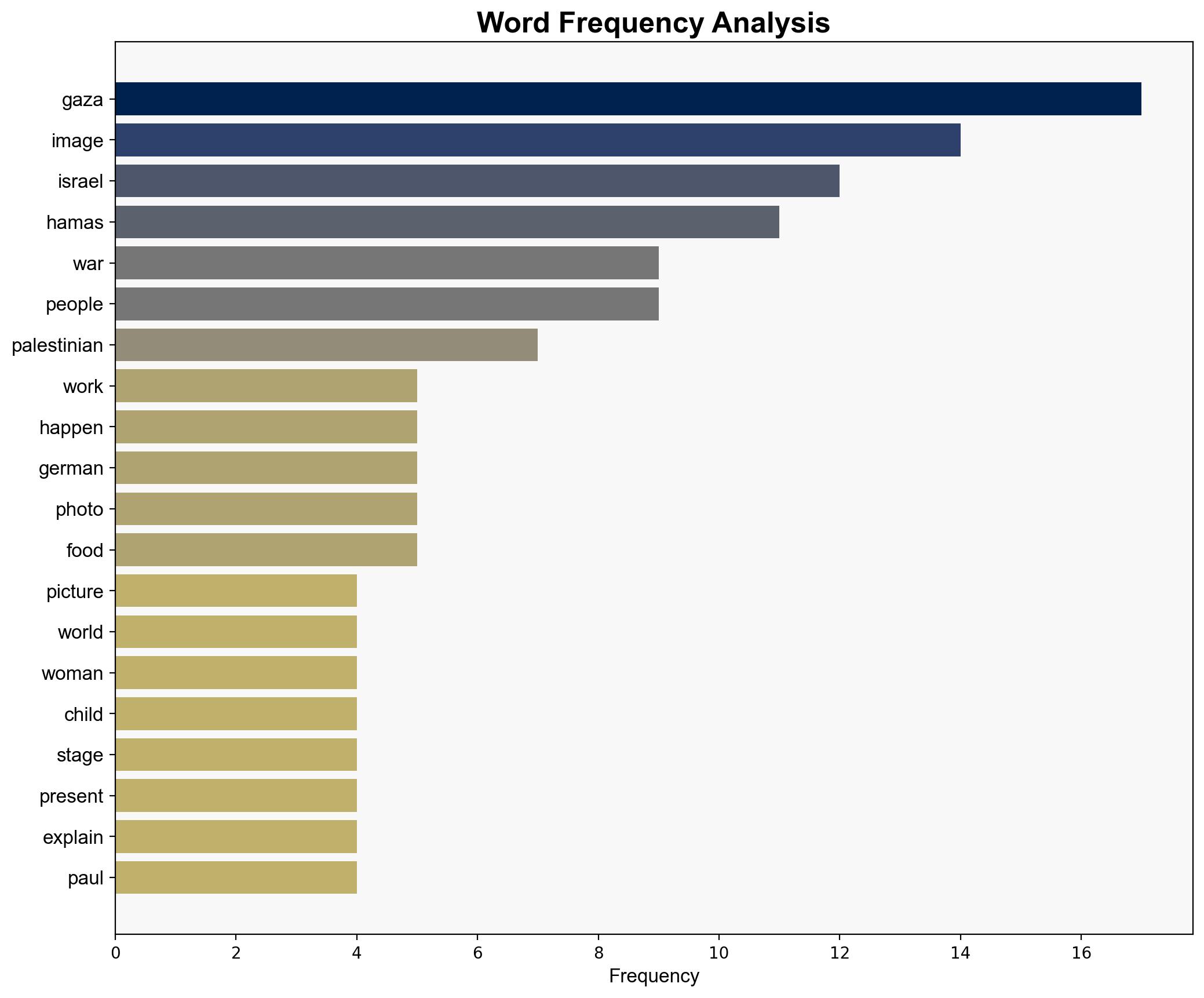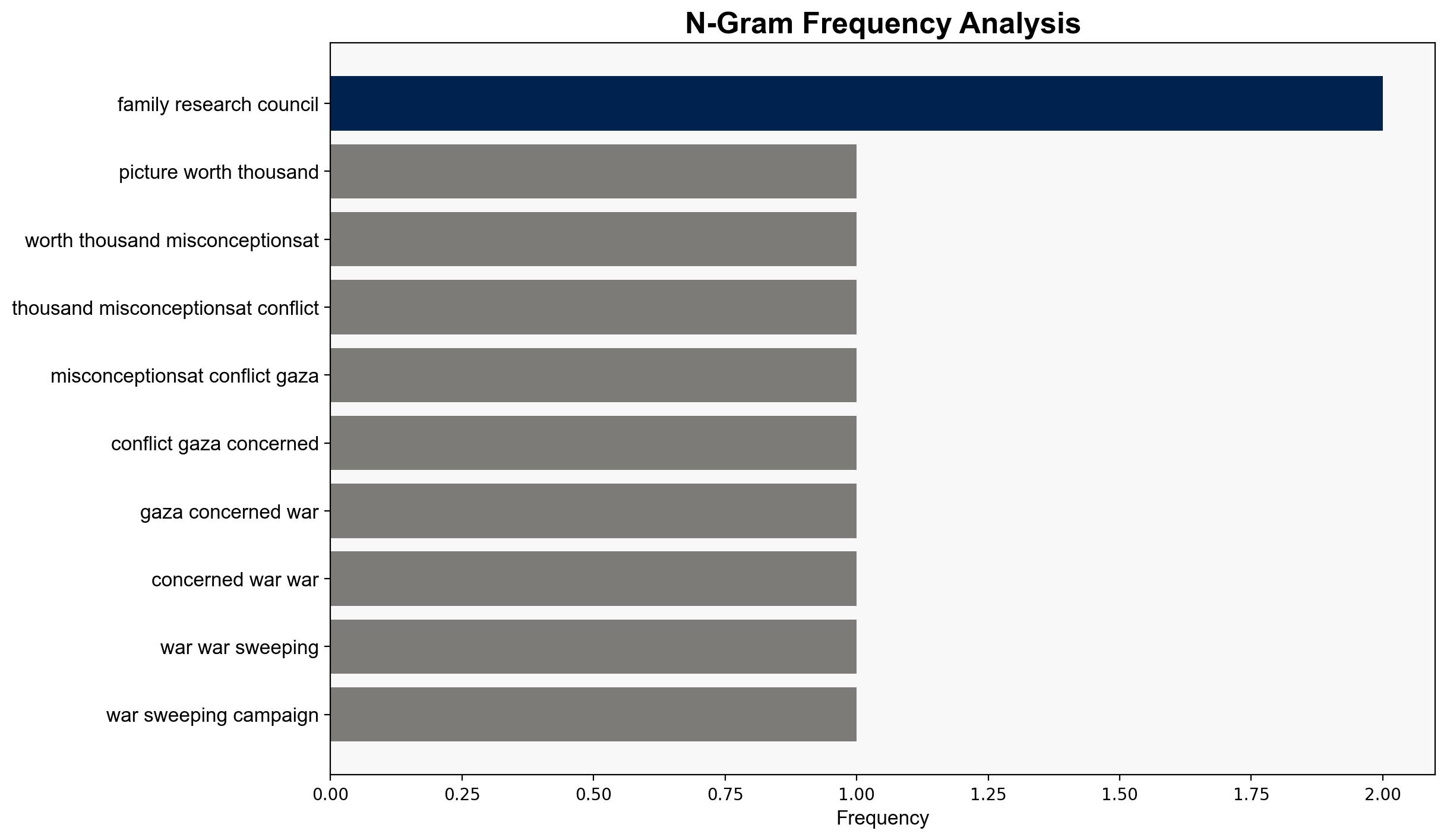The Israeli War Through the Medias Broken Lens – Daily Signal
Published on: 2025-08-09
Intelligence Report: The Israeli War Through the Medias Broken Lens – Daily Signal
1. BLUF (Bottom Line Up Front)
The most supported hypothesis is that there is a deliberate campaign of disinformation aimed at shifting global sentiment against Israel by manipulating media portrayals of the conflict. Confidence level: Moderate. Recommended action: Enhance media literacy initiatives and strengthen partnerships with credible international media outlets to counteract misinformation.
2. Competing Hypotheses
1. **Hypothesis A**: There is a coordinated disinformation campaign led by Palestinian sympathizers and media outlets to manipulate public opinion against Israel by staging and misrepresenting images of the conflict.
2. **Hypothesis B**: The media portrayal of the Israeli-Palestinian conflict is a result of genuine journalistic errors and biases, rather than a coordinated effort, leading to a skewed representation of events.
Using ACH 2.0, Hypothesis A is better supported due to the presence of multiple reports and investigations highlighting staged photographs and manipulated narratives, as well as the involvement of known individuals with agendas against Israel.
3. Key Assumptions and Red Flags
– **Assumptions**: Hypothesis A assumes a high level of coordination and intent behind the disinformation efforts, while Hypothesis B assumes a lack of intent and coordination, attributing discrepancies to journalistic errors.
– **Red Flags**: The repeated use of staged images and the involvement of individuals with known biases against Israel suggest intentional manipulation. However, the lack of direct evidence linking these actions to a centralized campaign is a blind spot.
– **Cognitive Bias**: Confirmation bias may affect the interpretation of evidence, as stakeholders may selectively highlight information that supports their pre-existing beliefs.
4. Implications and Strategic Risks
The continued dissemination of manipulated media can exacerbate tensions, leading to increased geopolitical instability and potential escalation of the conflict. It may also undermine Israel’s international standing and complicate diplomatic efforts. The psychological impact on global audiences could fuel anti-Israel sentiment and influence policy decisions in key nations.
5. Recommendations and Outlook
- Enhance media literacy programs to educate the public on identifying misinformation.
- Strengthen collaborations with reputable international media to ensure accurate reporting.
- Scenario Projections:
- Best Case: Successful counter-misinformation efforts lead to a more balanced global perception, reducing tensions.
- Worst Case: Escalation of conflict fueled by misinformation results in broader regional instability.
- Most Likely: Continued media manipulation leads to sustained diplomatic challenges for Israel.
6. Key Individuals and Entities
– Anas Zayed Fteiah: Identified as a photographer involved in staging images.
– Eyal Yakoby: Critic of the media portrayal of the conflict.
– Isaac Herzog: Commented on the impact of manipulated images on public perception.
7. Thematic Tags
national security threats, media manipulation, geopolitical instability, misinformation campaigns




